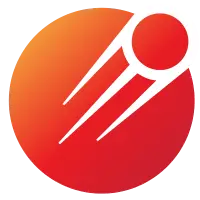Soyuz TMA-7
Launch Success
Liftoff Time (GMT)
03:54:53
Saturday October 1, 2005
Mission Details
Soyuz TMA-7
Soyuz TMA-7 (Russian: Союз ТМА-7) was a transport mission for portions of the International Space Station (ISS) Expedition 12 crew launched October 1, 2005. The flight delivered ISS Commander William McArthur and ISS Flight Engineer Valery Tokarev to the station to replace Expedition 11 crew members. Spaceflight Participant Gregory Olsen joined the TMA-7 crew for the ascent and docking with the ISS, spent approximately eight days aboard conducting experiments, then returned to Earth with the outgoing members of Expedition 11 aboard Soyuz TMA-6. McArthur and Tokarev were joined on their return trip to Earth by Flight Engineer Marcos Pontes who launched aboard Soyuz TMA-8 and spent approximately seven days aboard the ISS conducting experiments for the Brazilian Space Agency. The Soyuz is a Soviet crewed spacecraft, developed to perform lunar missions with crew. This version called 7K will fly 4 times on the giant launcher N1, and several tens of times on Proton to fly over the Moon, which will be successful during the mission Zond 4. Soyuz will become the first spacecraft to transport living beings on the Moon during the flight of Zond 5, with two turtles. Thereafter, it is adapted to the low orbit and will fly on the Soyuz launcher to supply the Soviet Salyut and Mir stations, and the ISS.
Low Earth Orbit
1 Payload
7,250 kilograms
Rocket


Manufacturer
RKK EnergiyaRocket
Height: 51.32m
Payload to Orbit
LEO: 7,300 kg
GTO: 0 kg
Liftoff Thrust
4,550 Kilonewtons
Fairing
Diameter: 3m
Height: 15.59m
Stages
3
Strap-ons
4
Launch Site
Stats
Soyuz FG
13th
Mission
3rd
Mission of 2005
2005
42nd
Orbital launch attempt